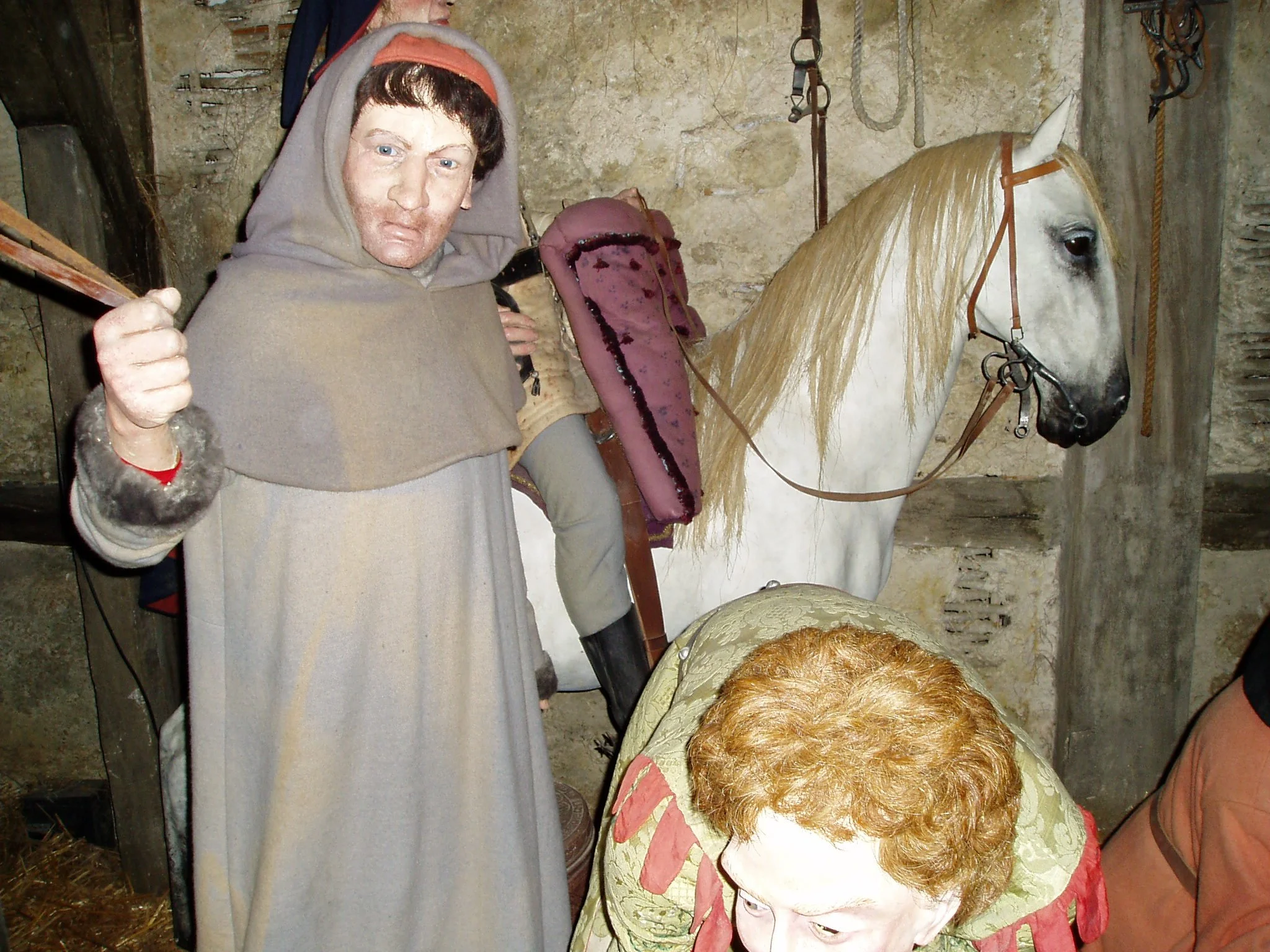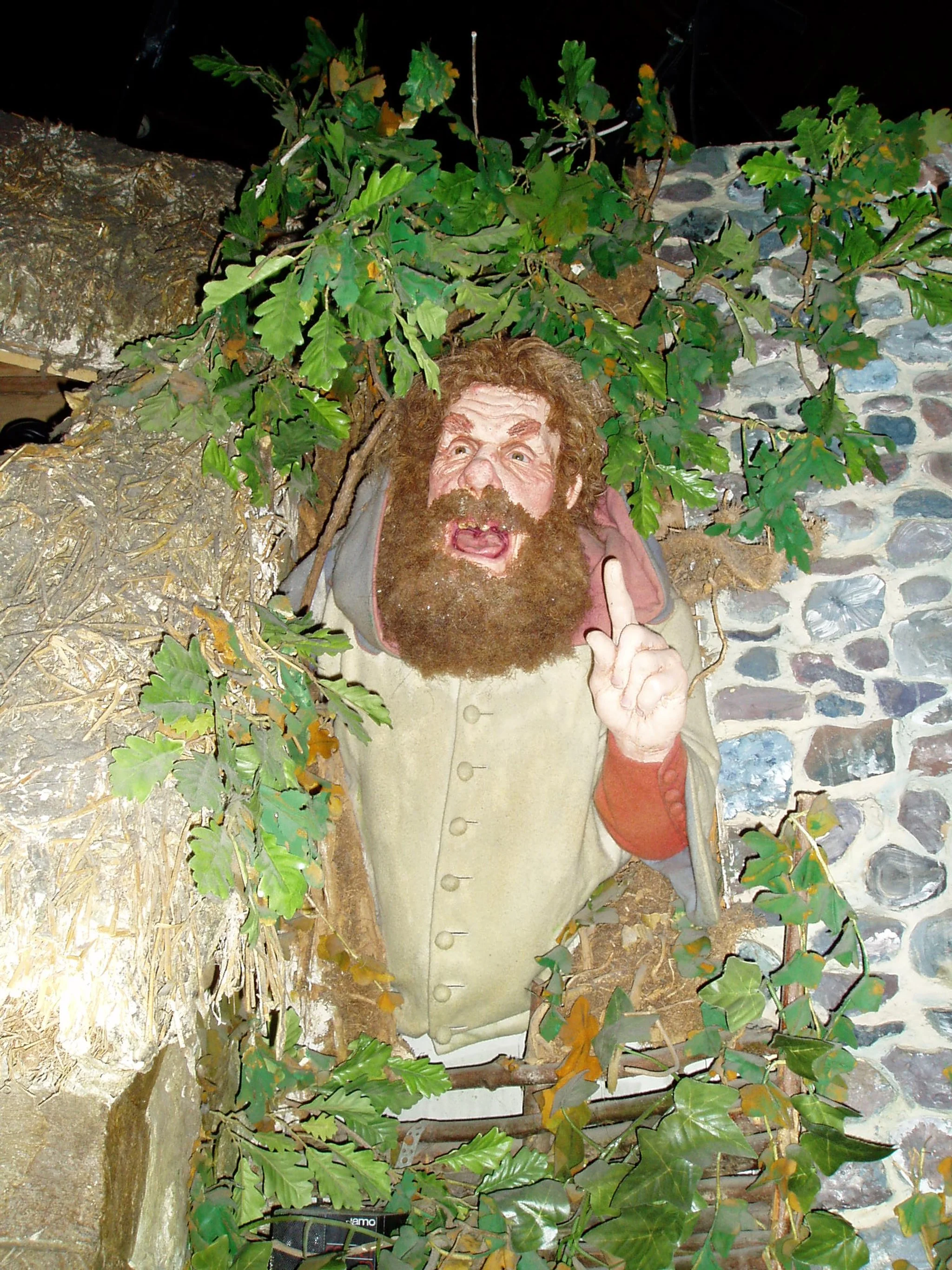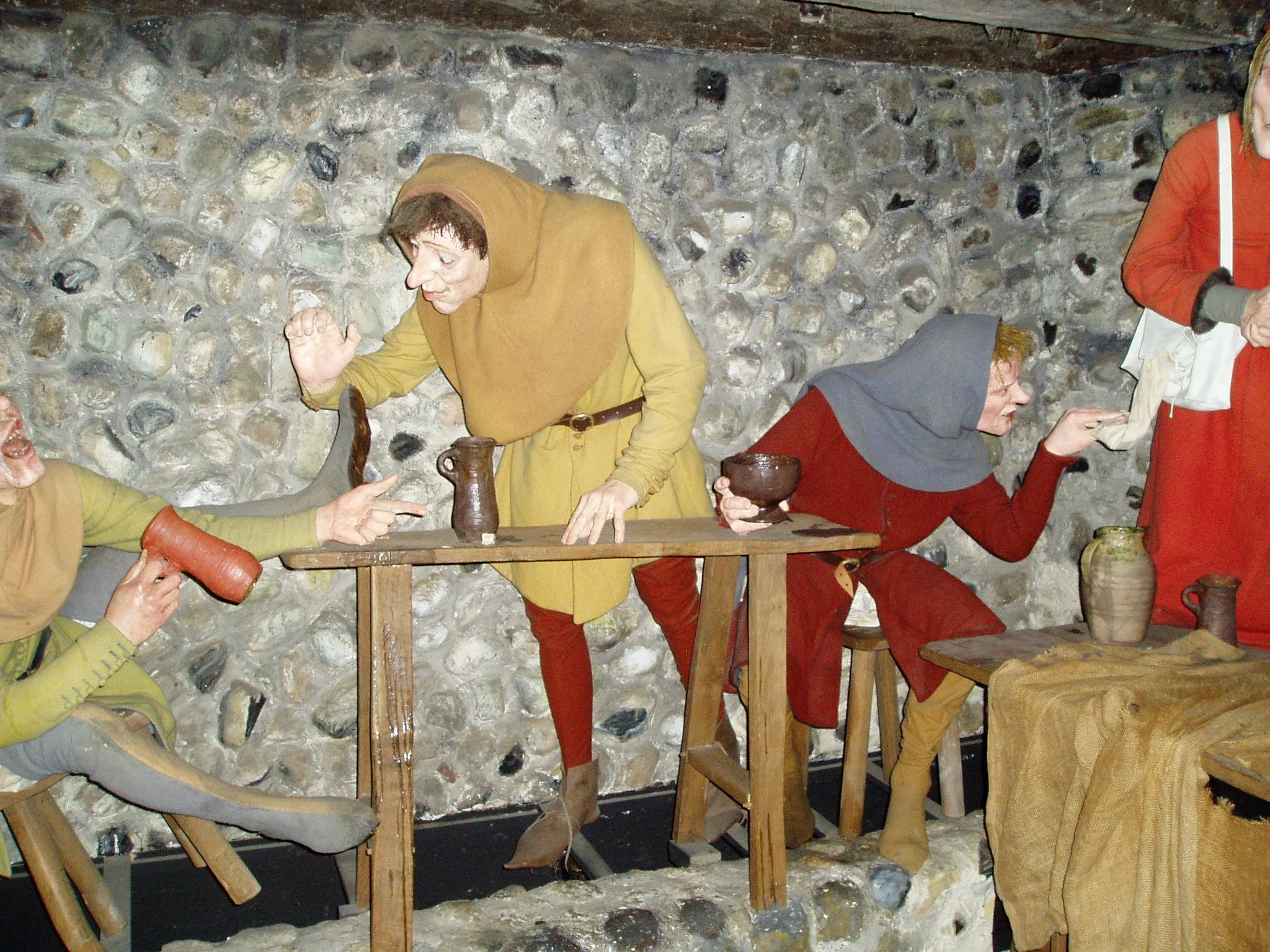The Canterbury Tales
Canterbury has been a place of pilgrimage for over a thousand years. Amongst the most famous of these pilgrims are those fictitious ones created by Geoffrey Chaucer who followed the road from Southwark to the shrine of St Thomas, sharing stories along the way. This collection of twenty-four stories was wonderfully brought to life at ‘The Canterbury Tales’ experience. Sadly, however, this closed down in 2020.
We visited this attraction more than once, the last time being in 2014. Welcomed by a costumed guide, visitors were taken through a recreated Medieval setting, starting at the Tabard Inn in Southwark and following the often bawdy group of pilgrims as they told their tales on the way to Canterbury. About five of the stories were re-told as visitors wandered from room to room, full of the sights and sounds of the tales.
Written in Middle English between 1387 and 1400, ‘The Canterbury Tales’ was Chaucer’s final and most famous work. The original plan seemed to be for 120 tales, but he completed only 20 and left parts of four more. The order in which the tales were supposed to be presented is uncertain. Pilgrimages to cathedrals or shrines dedicated to Christian saints were common during the Middle Ages and Canterbury, the site of the murder of Thomas a Becket in 1170, was one of the most popular.
The stories were not written for children and are full of bawdy boisterousness, but there are a number of adaptations available. Marcia Williams has brought her comic-book creativity to the stories, making them accessible and entertaining with plenty of cheeky humour. Both Selina Hastings and Geraldine McCaughrean offer more traditional re-tellings with some judicial pruning of the naughty bits!
Chaucer was actually born in London although the date and specific location are unknown, and he was the first writer to be buried in what has become known as Poets’ Corner in Westminster Abbey. The Tabard Inn, in Borough High Street, is where the pilgrims gather for their journey to Canterbury and the link is commemorated in the ‘Chaucer Window’ in Southwark Cathedral.














